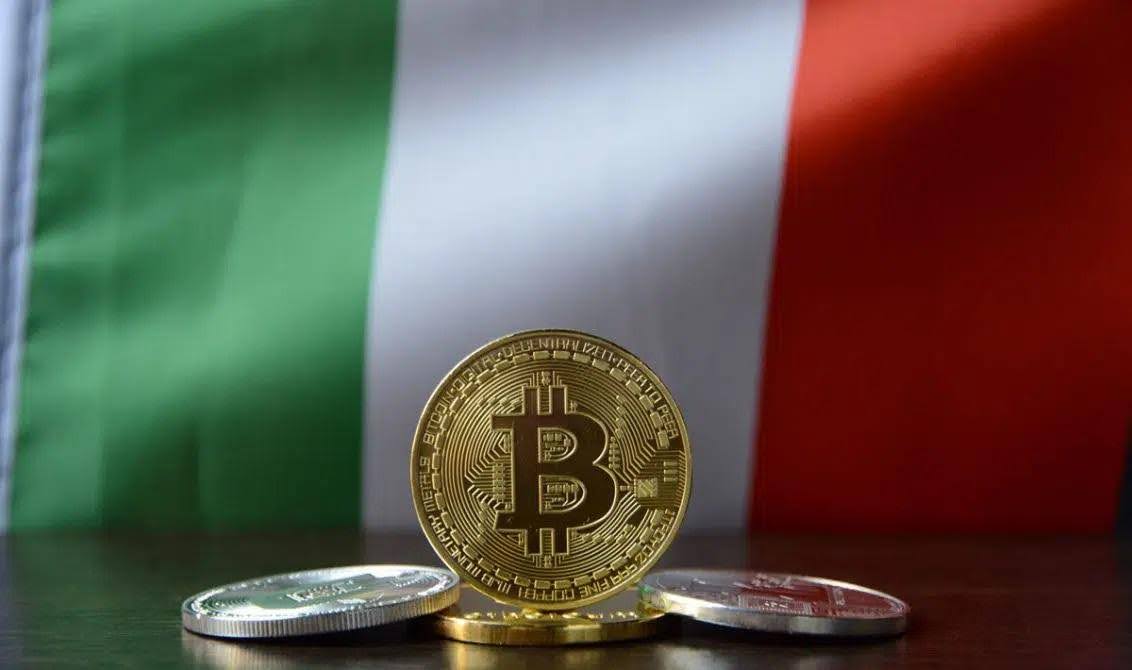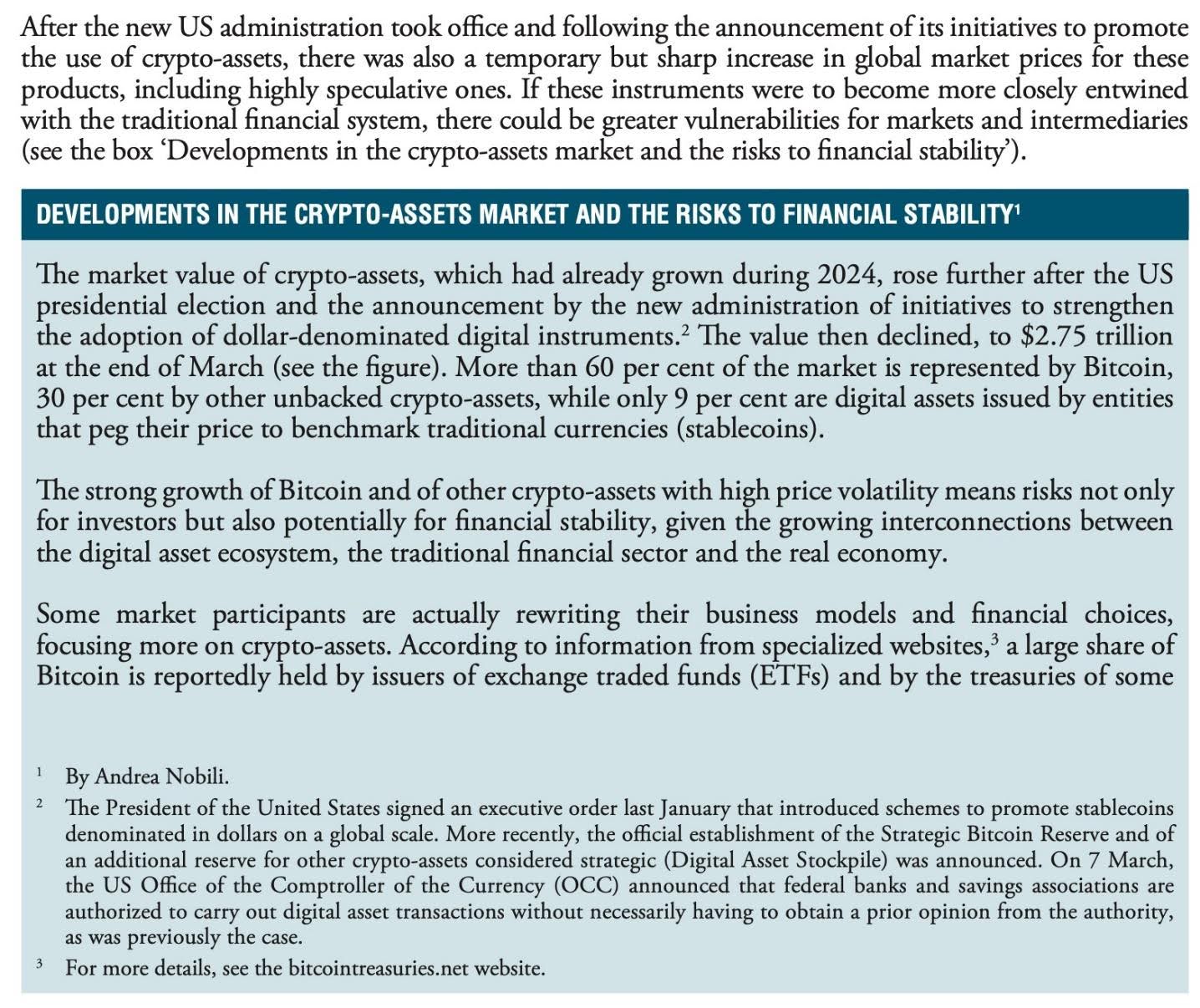Italy’s Central Bank Warns of Crypto Instability as Trump Administration Embraces Digital Assets

Key Takeaways:
- The Bank of Italy warns that crypto’s integration with traditional finance may trigger systemic risks.
- Concerns rise as President Trump’s administration softens regulations and promotes crypto adoption.
- Though central bank warning, Italy’s biggest bank keeps putting money into Bitcoin.
Linking market dangers to rising acceptance and political support—especially in the United States under President Donald Trump, Italy’s central bank has issued a stark warning on the potential impact of cryptocurrencies on world financial institutions. Italy’s financial industry seems split despite the warnings; big banks are pushing ahead with cryptocurrency investments.
Read More: Italy Tightens Oversight of Cryptocurrencies: Protecting Markets or Limiting Innovation?

The Growing Relationship Between Crypto and Conventional Finance
The April 2025 Financial Stability Report of the Bank of Italy underlined how increasing interconnectedness between digital assets and traditional financial institutions could cause market volatility. Though recent political events—especially in the United States—have heightened attention, this worry is not novel.
The central bank underlined in its report that crypto values climbed after Donald Trump’s re-election, pointing out the administration’s positive attitude toward the digital asset sector. The study implies that such policy alignment can promote too high risk-taking among financial intermediaries and raise general market exposure to very volatile assets.
“If these instruments were to become more closely entwined with the traditional financial system, there could be greater vulnerabilities for markets and intermediaries,” the Bank noted.
The report further warned that the $2.75 trillion global crypto market, with Bitcoin accounting for over 60% and stablecoins just 9%, has reached a level of maturity that poses macroeconomic threats when paired with lax oversight.
Read More: Italy’s Largest Bank Makes Its 1st Big Move into Bitcoin with a $1M Purchase
Political Shifts in the U.S. Raise Red Flags
The Trump administration’s pro-crypto approach is causing unease among European financial regulators. U.S. regulatory authorities have cut back on enforcement proceedings against crypto companies and even held crypto-related activities at the White House over past months.
This turn has heightened worries about the concentration of cryptocurrency power in a small number of U.S.-based companies. The Bank of Italy estimates that 75% of key digital asset companies operate in the U.S., with the rest spread across China, Canada, and the UK. The euro area has minimal representation.

“These entities are not subject to specific governance requirements and may therefore have significant conflicts of interest,” the report stated.
Italian regulators also took aim at the rise of Bitcoin-based exchange-traded funds (ETFs) and corporate treasuries adopting Bitcoin to boost share prices—a practice popularized by firms like MicroStrategy. The Bank believes this trend may expose non-financial companies to undue volatility.
Stablecoins Pose Sovereignty and Liquidity Risks
Particularly under investigation are dollar-pegged stablecoins like USDT (Tether) and USDC (Circle). Though meant to preserve a 1:1 ratio with the U.S. dollar, these assets are mostly supported by short-term U.S. Treasury bonds. A big redemption of stablecoins, the Bank of Italy said, might set off the fast liquidation of U.S. debt obligations, hence upsetting bond markets.
“A widespread run on redemptions could set off a fire sale of U.S. government bonds and shake global markets,” the research said.
Push for the Digital Euro
The European Central Bank (ECB) has been hastening its blockchain-based payment system to offset the hegemony of dollar-backed digital assets. Aiming to assist a central bank digital currency (CBDC) and lower the EU’s dependence on foreign stablecoin infrastructure, the project announced in April would roll out in two stages.
Intesa Sanpaolo, Italy’s biggest commercial bank, is welcoming digital assets despite the Bank of Italy’s strong cautions. The bank revealed in January 2025 that it had bought 11 Bitcoins, valued about €1 million. It also underwrote Italy’s first blockchain bond in July 2024 and launched spot crypto trading from its proprietary trading desk in November.
Crypto Volatility and Governance Remain Unresolved
The Bank’s core message remains consistent: volatility, governance issues, and market entanglement are growing threats. It sees Bitcoin and speculative crypto-assets not only as a risk to individual investors but also as potential triggers for broader systemic instability, especially when linked to corporate balance sheets or state-backed initiatives.
As the global financial landscape shifts under the influence of political support and investor enthusiasm, the Bank of Italy’s report underscores a simple but urgent message: crypto is no longer isolated—and its risks are no longer theoretical.
The post Italy’s Central Bank Warns of Crypto Instability as Trump Administration Embraces Digital Assets appeared first on CryptoNinjas.



